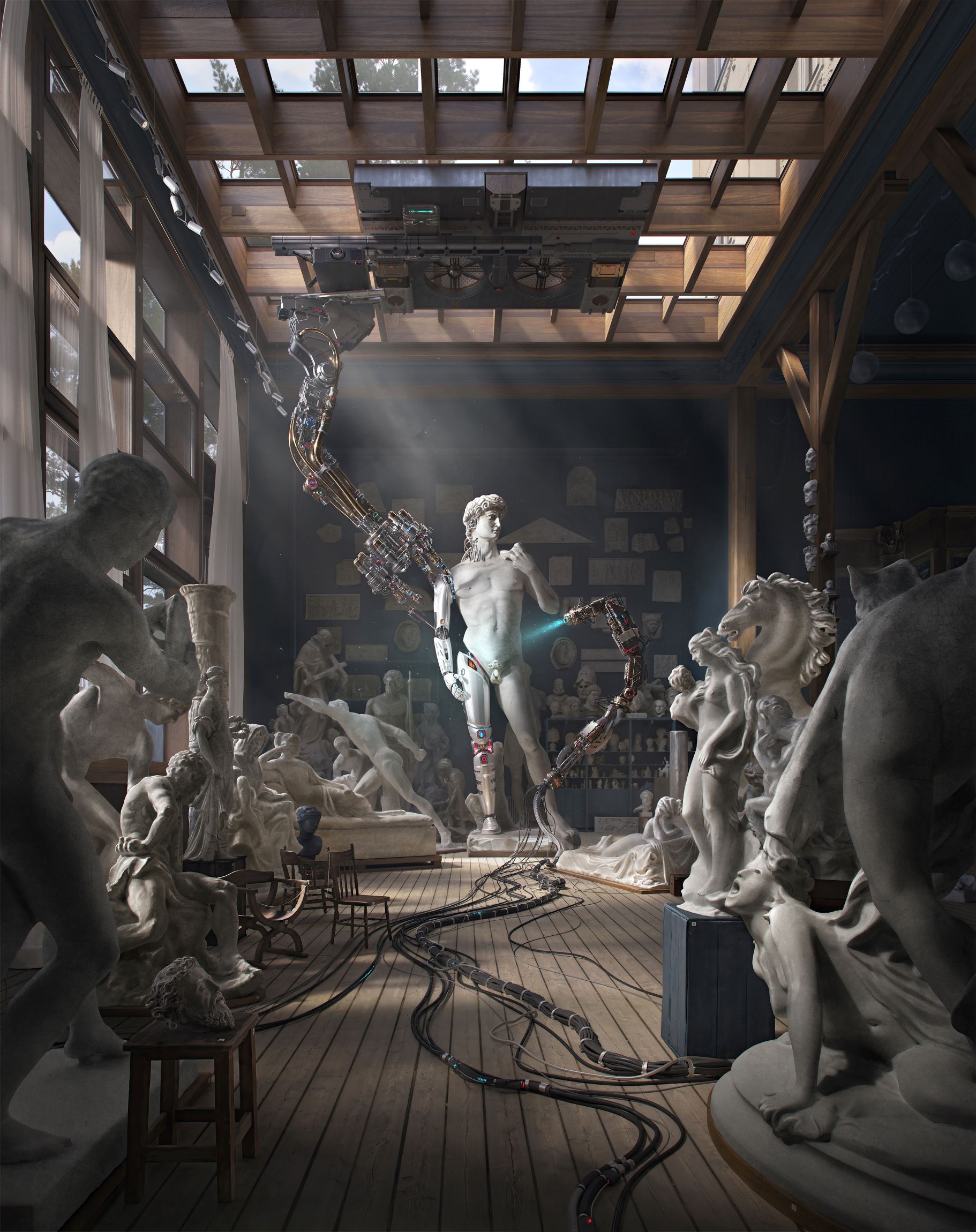‘Hellenica’ by Vittorio Bonapace
Dominating high above the chaotic environment in which it dwells is a figure of universal recognition: Michelangelo’s David. He stands heroically, commanding the myriad of other classical-style sculptures that stand around him in what appears to be an artist’s studio. David’s statue is found at the Galleria dell’Accademia in Florence and is the focus of
hundreds of camera lenses trying desperately to capture what remains to be one of the greatest masterpieces created by mankind. Yet with this work, David is presented unfinished, with lasers and machine-controlled screwdrivers prodding and probing to carve out a faithful reproduction of the original. Here we have the future, or what Vittoria Bonapace, the artist behind this work, suspects it to be.
*
The future, in Bonapace’s eyes, is a world where art meets technology. Any hint of an artist is removed from the narrative, replaced by machinery that invades what would have been a near-symmetrical composition. It confronts the viewer, forcing them to ask questions about machine-made art and whether it can be considered creative or imaginative. These are pressing questions, especially during an age when digital art is fast advancing and dominates
a significant part of the art market.
*
Questions doubting the creativity and imaginativeness of machines need to be addressed. Surely there is little distance between the two since the machines in question are in fact of human construction and since humans are inherently
creative and imaginative, can the same not be said of machines that are manufactured in their image? Bonapace seems to hint at this debate as he has chosen one of the most recognisable artistic motifs and presented it as the creation of a machine. Because the viewer is already aware of this motif, it is, for them, merely a replication. The work, therefore, acknowledges that any machine-based art rests on previous artistic endeavours of humankind. But, what of
the artistic process? Surely, art is not defined solely by the finished product but is the result of the artistic process, and if so, are machines capable of experiencing their own artistic process, free from humankind? This question seems relevant only when there is concrete evidence of machine-made art with no human contribution, but since machines are still the outcome of human ingenuity, there is, as of now, little room to entertain such a notion.
*
With this work, Bonapace has successfully articulated one of the main components of great art: the ability to “embed thought in material”, as stated by Roberta Smith, the co-chief art critic of The New York Times. The phrase necessitates that an object should express ideas; art should contain emotions, and these ideas and feelings should be easy to understand to the viewer. HELLENICA has successfully communicated an idea, or rather a debate surrounding
machine-made art, and the emotion is subjective to whoever plays the role of the viewer. For some, the notion promoted by Bonapace might ignite rage in those who latch onto traditional views of art or, may rather, excite those who anticipate the development of art in a new direction.
*
Returning to the original creator of David and what he represents provides a point of departure for this discussion. Michelangelo, like most high-end Renaissance artists, had a studio where artists and craftsmen realised his vision. So, perhaps this provides a metaphor by which we can understand machine-made art: humankind represents Michelangelo and artistic vision, whereas machines characterise his studio and its artistic realisation of the
creator’s initial vision. Machines are, therefore, the intermediary between the initial vision, as dictated, for now, by human creativity, and the finished product.
